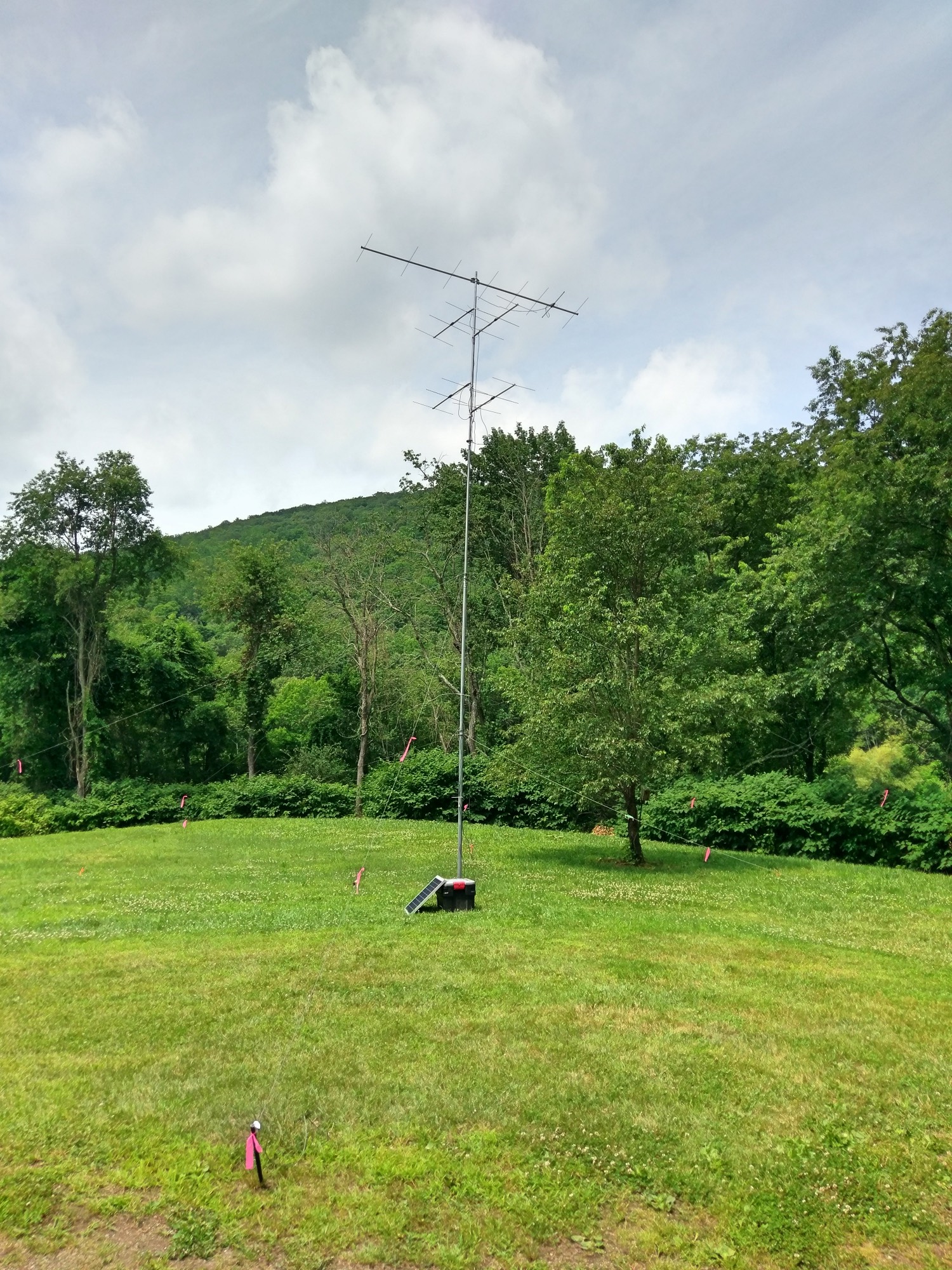
Tracking Migratory Birds
Great Hollow is contributing to the Motus Wildlife Tracking System, a multi-national, collaborative research network that uses automated radio-telemetry towers to study the migration of birds, bats, and insects. We just set up our first tower at the preserve and it can now be seen on the map of Motus towers that are in operation throughout North America, Central America, South America, and the Caribbean. Motus towers consist of a receiver and antennas that detect digital radio signals emitted from tiny tags that can be attached to birds, bats, and even insects like butterflies and dragonflies. Any time a tagged animal flies within a few miles of a tower, its signal is recorded and the researcher who tagged the animal is notified of the date, time, and location of the detection. This new technology combined with the growing collaborative effort of dozens of universities, government agencies, and research institutes like Great Hollow has opened up a whole new world of possibilities for scientists to study the migratory behavior of animals that are too small to carry heavy GPS or satellite tracking devices. Great Hollow’s scientists have deployed digital radio-tags on 6 Ovenbirds that nested at the preserve this summer and will soon embark on fall migration to their wintering grounds in the Caribbean, almost 2,000 miles away. This is the beginning of a larger study planned for next year that will investigate the effect that mercury pollution is having on the ability of birds to migrate long distances. With a little bit of luck, we will know from the network of Motus towers how a bird’s mercury level effects the pace with which it is able to migrate south and the likelihood of it successfully reaching its wintering grounds. We are also looking forward to seeing if birds, bats, or insects radio-tagged by other scientists, in other places get detected by the radio tower that is now up and running at Great Hollow. Stay tuned! (pun intended)

 Previous Post
Previous Post